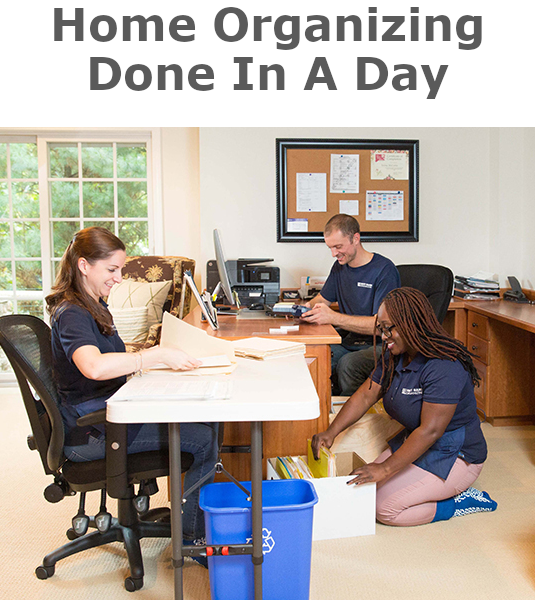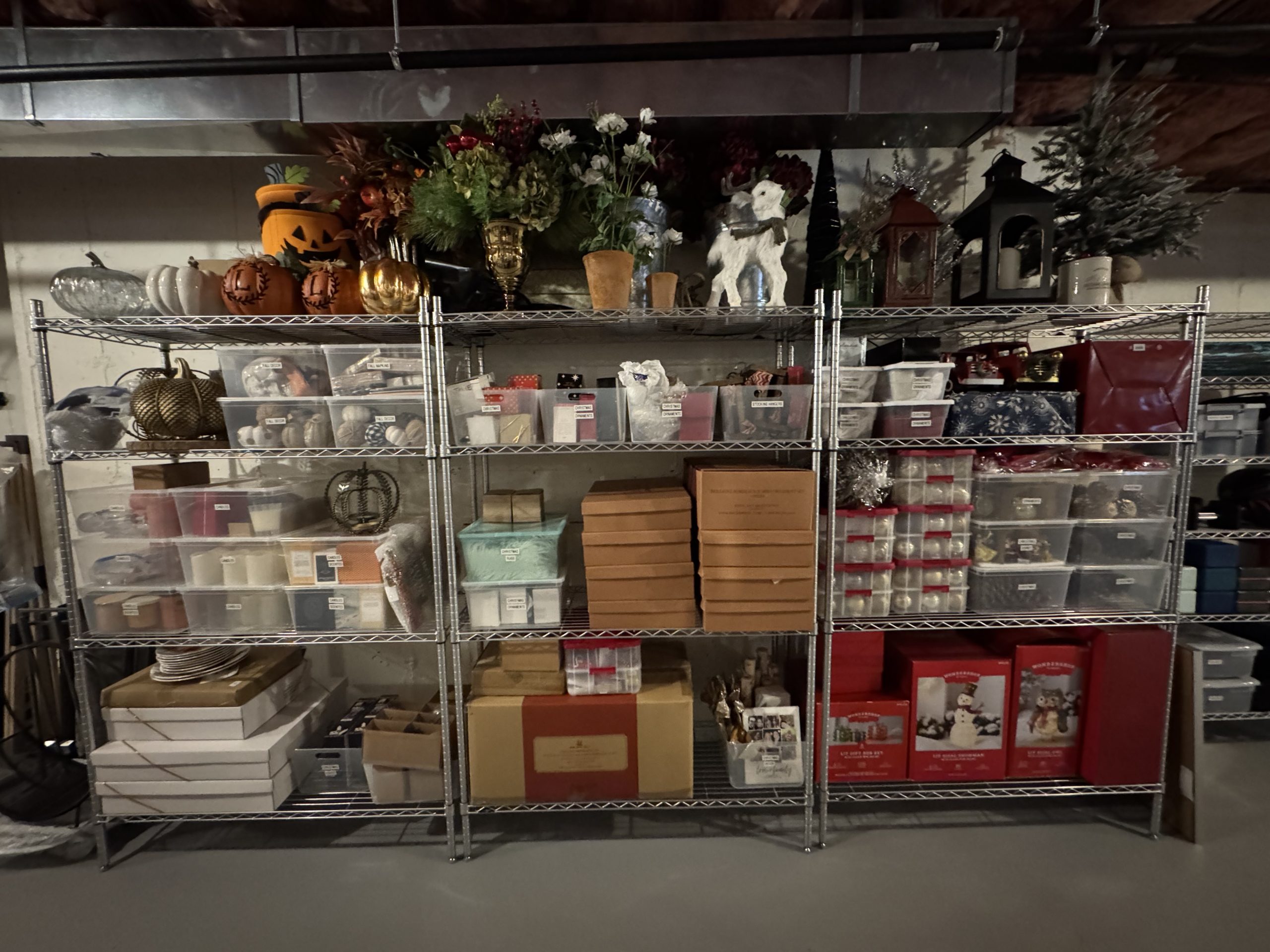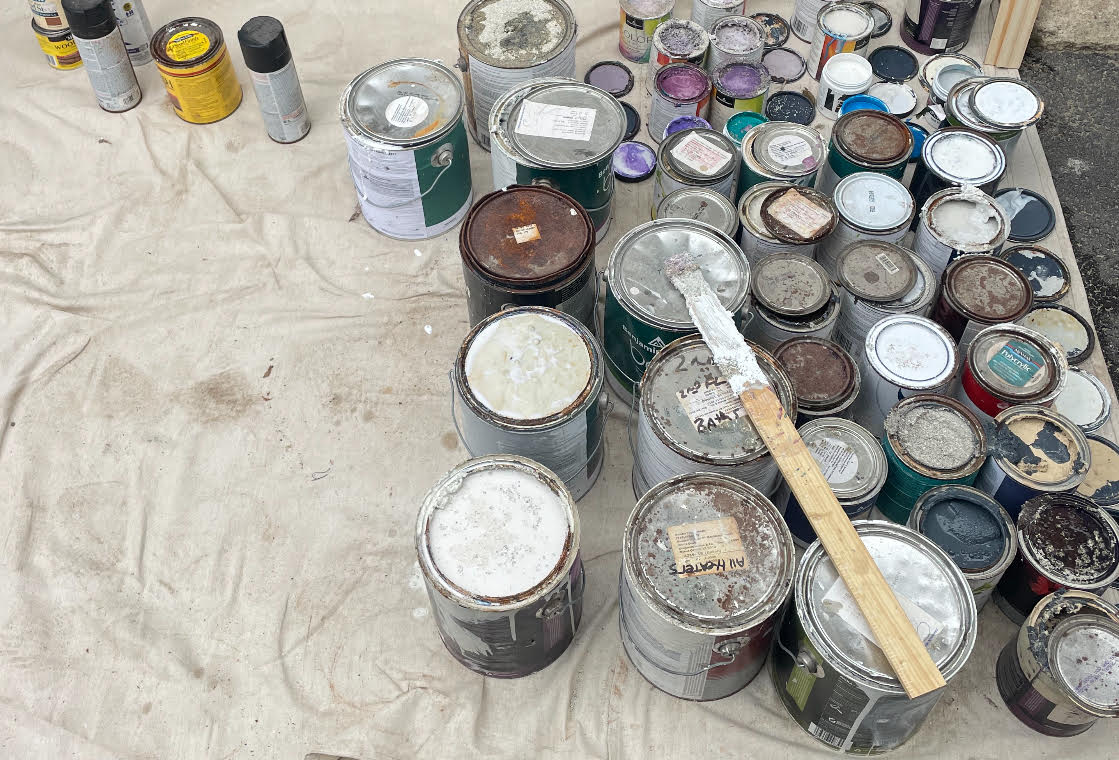One thing I often hear during a consultation is “Believe it or not, I’m really organized at work.” There are certain elements in a corporate office that make it easier for us to stay organized. Without these elements in your home it is hard to stay organized. Organizing your home office during the Coronavirus is even harder. Here are some strategies to bring those missing elements home.
Before we look at those strategies, let’s look at what those missing elements are. In a corporate office space, you may take the following for granted:
- regular 9-5 schedule
- daily trash pick up
- shredder bin
- supply room
- mail room
- administrative help/ interns
- company clean up day
- conference room table
- distance from family/ chores/ distraction
You may not have had all those elements, but I bet you had a few. And I’ll bet you can think of a few more. Here’s what to do to replace them.
Establish dedicated zones
Establishing dedicated zones, starts with the office itself. A laptop on the couch won’t cut it for long for most of us. Look at the importance of performing work in your home relative to other spaces in your home. You will find that one of these space must be dedicated to your office. So find that space or reprioritize a less important one, if you haven’t already.
Once you’ve chosen that space, how do you dedicate the areas within it? I like to use the Target Model. The target model involves looking at your office as a target with four rings and a bullseye. Each ring represents a different level of priority to store items in your office. This helps leave the bullseye, your desk surface, always clear for processing. Learn further details in target your office.
Value the clear work surface
I need to expand upon the importance of a clear work surface. A clear work surface is more than a nice idea, it is your #1 organizing tool. That’s because it allows for processing. You can spread out and prioritize on a clear work surface. The ability to prioritize is paramount to focus and productivity. The number one daily organizing habit then is clearing your work surface at the end of the day. Nothing lives on the work surface. That’s what the target rings are for.
Circulate your paper
Despite the promise of a paperless society, paper still creates a lot of disorganization in the office of 2020.The answer to paper accumulation is outlined in my book The Circulation Solution. The central premise: Circulation prevents accumulation. By “circulation” I mean a plan for movement in a series of manageable, reliable stages.
This applies to everything, but with paper there are just four essential stages. These stages are Running, Sitting, Sleeping, and Dead. Each stage has a time limitation, so you know exactly when it should circulate to the next stage. There’s no confusion or ambiguity, so there is never an accumulation. Your work surface is always clear for processing. Learn more how this works here.
“Headline” your work
You may feel you are unable to clear your desk at the end of the day. Perhaps you are in the middle of a project and you don’t want to lose your place. That’s what the Newspaper Model is all about. This requires treating your work space like a newspaper. Every work space should have a system for collecting tasks. It should also have a system for holding ongoing projects, away from the desk.
Binders, files, and reports tend to get left on one’s valuable work surface as reminders. They needn’t be there any more than a full newspaper story needs to be on the front page. A task collector should serve as the front page of a newspaper. That way, you can easily choose you priorities, just as you choose a headline. In both cases you should have a connection to the story inside. This model will not only keep your valuable desk surface clear, but keep your priorities organized.
Derail the mail
The biggest regular source of paper is the daily mail. It tends to pile up on clients’ kitchen counters and dining room tables. To conquer it, don’t think of it as mail. Mail stops being mail the second it comes out of your mail box. Now it’s bills to pay, statements to file, magazines to read etc. Don’t worry about processing. Just sort. Then move these categories to their appropriate locations for another time, leaving your surface clear. Divide now, conquer later. Sorting your mail is your number 2 daily organizing habit.
Circulate digital files too
Computer organizing is not a service we typically do, but I can tell you the best place to start. Start by thinking of you computer files in the same stages as your paper files.
Any ongoing projects on your computer are running files and need to be easily findable and accessible. I find the computer’s desktop perfect for this. At the end of the year, I make sure to transfer any non-current files to sitting or sleeping files.
There are some computer files I just need to be able to find reliably from time to time. These then are equivalent to sitting files. I like to keep them in Dropbox. If at any point I stop using them, I transfer them to sleeping files.
I definitely have a digital equivalent of sleeping files. Files that I am keeping just in case get stored in an external drive. I sort most of them by major categories. The rest get stored in folders by year.
There’s really no point plan for dead files in your computer, because they don’t eat up physical space. Still, it’s good to move your digital files in that direction. You are less likely to need the oldest files, so you can store them more remotely. Old external drives can go in a closet rather than your desk surface.
Finally, there is a digital equivalent of a clear work surface. It is important to reduce your digital files so that you have room for random access memory. Just as with the desk surface RAM is open space for processing. Without this open space your computer can crash. Similarly, when your desk surface is overloaded you run the risk of crashing. In both cases, circulation prevents accumulation.
All these strategies will help keep your home office running smoothly. However, they will be particularly helpful with organizing your home office during the Coronavirus.
Please Share With Your Community
















